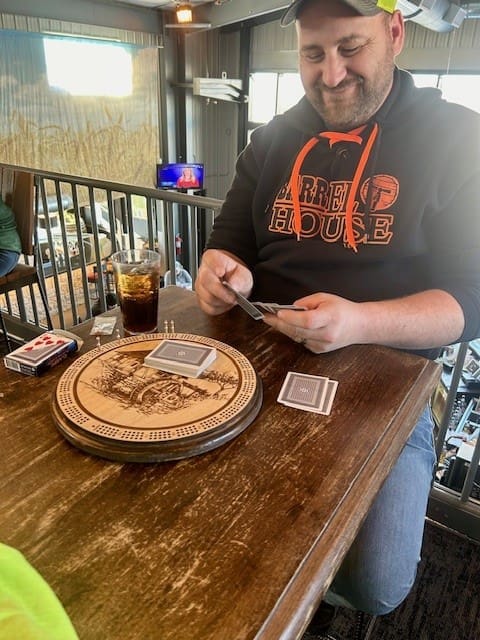
Handling Disputes in a Cribbage Tournament: Friendly Advice for a Smooth Event
Hosting a casual cribbage tournament can be a lot of...
Read MoreHosting a cribbage tournament is a fantastic way to bring people together for some fun and friendly competition. A round-robin format ensures that everyone gets plenty of chances to play, making it a perfect fit for both casual and serious players alike. In this system, players keep their own scorecards throughout the tournament, and the final tally on each scorecard determines the winner.
Here’s a complete guide on how to host and officiate a successful cribbage tournament using the round-robin system, ensuring fairness, fun, and smooth transitions between games. You can also download a free cribbage scorecard PDF here to make your tournament setup even easier!

A round-robin tournament gives each player the chance to face multiple opponents, without the need for elimination rounds. The beauty of this system is that everyone gets to play as much as time allows, with the winner determined by their total score at the end of the tournament.
A round-robin format ensures fairness, giving all participants equal opportunities to play and earn points. However, the number of games each player will play depends on the time frame for your tournament. To keep things moving smoothly, each game is allotted 30 minutes. Here’s how it works:
Face as Many Opponents as Time Allows: Players will face different opponents in each round, with the goal of completing as many games as possible during the set tournament timeframe. For example, in a 3-hour event, players might be able to complete 5 to 6 games. This allows everyone to enjoy the game at a comfortable pace while maximizing the number of matches.
30-Minute Game Limit: Each match is capped at 30 minutes. If players finish early, they’re welcome to take a short break—stretch their legs, grab a snack, or chat with other participants—before the next round begins. This ensures everyone can take their time and enjoy the event without feeling rushed.
Calling Scores at the 30-Minute Mark: If the 30-minute limit is reached and a game isn’t finished, players simply call the score as it stands. The player in the lead at that point will record the win, and both players will note the current point difference as the spread on their scorecards. This keeps the tournament fair and ensures that no one game holds up the rest of the event.
With this structure, the tournament flows smoothly, everyone gets a fair number of games, and the competitive spirit stays strong!
Each player will track their progress using the WC Engraving scorecards, which they keep with them throughout the tournament. The scorecards track not only wins and losses but also the point spread, which helps determine the overall winner if there’s a tie.
The key sections of the scorecard include:
At the end of the tournament, the total game points and spread points will be used to determine the overall winner.
You can download the scorecard PDF for free here to make it easy for all players to track their progress!
At the beginning of the tournament, randomly pair players for the first round. Once the first round is completed, players will rotate opponents for each new round.
This system ensures everyone plays each other, and no one is paired with the same opponent twice.
Set a 30-minute time limit for each game. This ensures that the tournament progresses at a steady pace and allows enough time for multiple rounds. Players who finish early can take a break until the next round begins, while those still playing will call their scores at the end of the 30 minutes.

As the host, your role is to ensure the tournament runs smoothly, fairly, and that everyone is having a good time. Here’s how you can manage it:
Kick off the event by explaining the rules, showing participants how to use the scorecards, and confirming the 30-minute game limit. Make sure everyone understands how to record their results and handle unfinished games.
As players move through their games, walk around to monitor progress, answer any questions, and resolve any disputes that may arise. While you don’t need to sit at every table, your presence will help maintain a fair and fun environment.
Once all rounds are completed, collect and verify each player’s scorecard. The final ranking is determined by:
Prizes or recognition can be awarded to the top performers, such as the overall winner, best skunk, or even most enthusiastic player!
To keep things enjoyable, encourage a friendly, social environment throughout the event. Cribbage is as much about having fun as it is about competition.
Hosting a round-robin cribbage tournament is a great way to bring people together for fun and competitive gameplay. By giving everyone equal opportunities to play multiple opponents and keeping games to a 30-minute limit, you ensure the event flows smoothly and stays enjoyable for all participants. With the help of WC Engraving’s custom scorecards, managing and officiating the tournament is simple and professional.
Download the scorecard PDF for free here to help your tournament run smoothly and professionally.
Hosting a casual cribbage tournament can be a lot of...
Read More|
Uploaded
Failed
|
 |